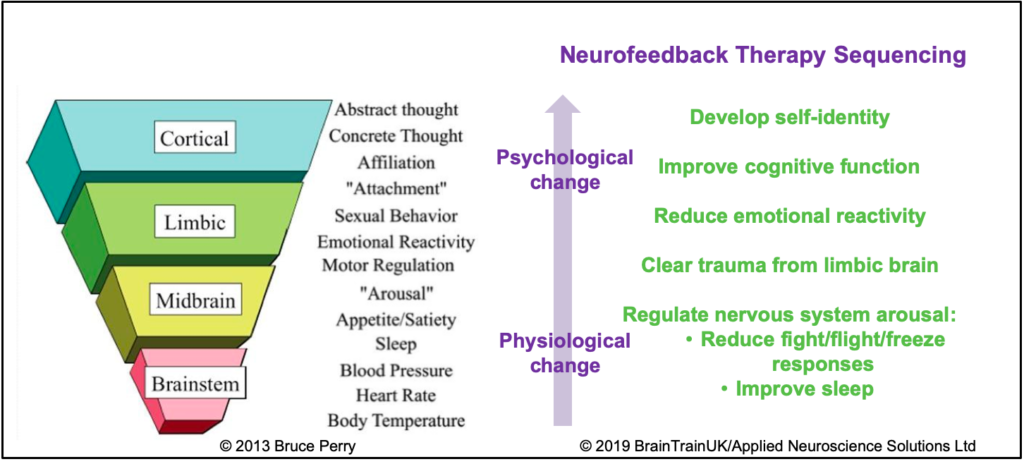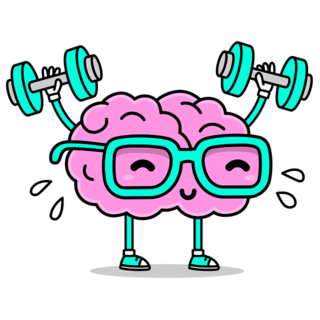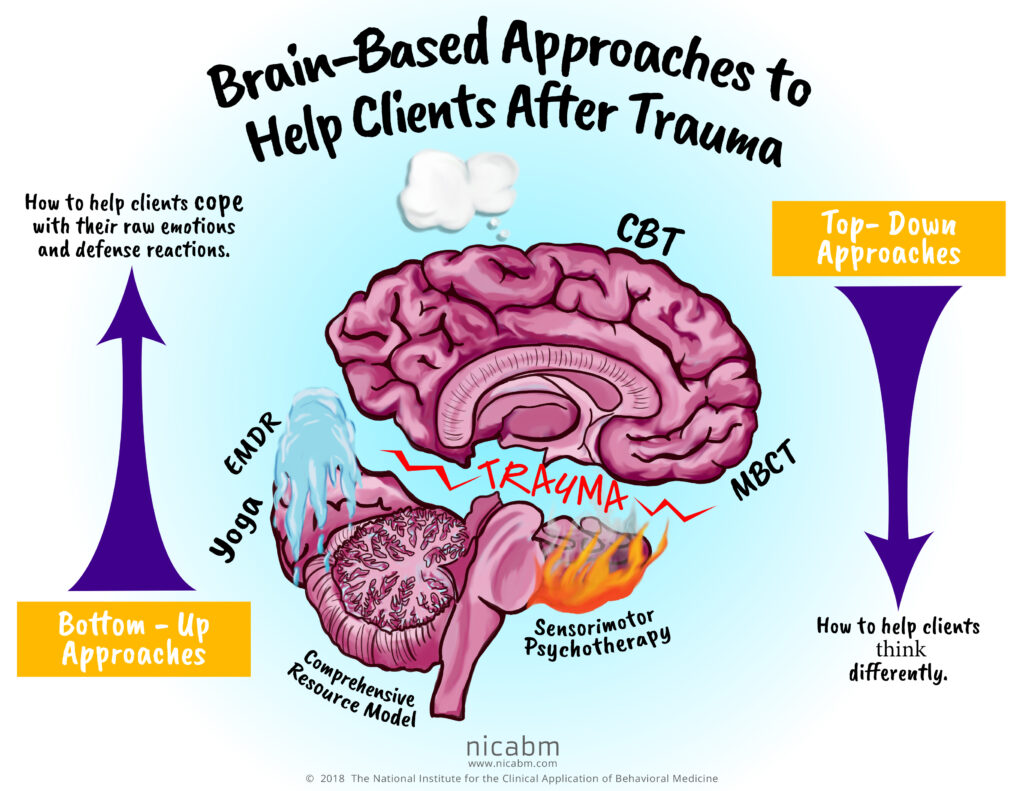Unlocking the Secrets of Child Brain Development: A Comprehensive Guide for Moms using the Neurosequential Model of Therapeutics (NMT)

The Neurosequential Model of Therapeutics (NMT)
I will preface this by saying, I am not a professional in neuroscience. Having experienced trauma in my own life, I have made it a priority to educate myself on the best practices for healing and recovery. My children have also experienced trauma, both through witnessing my own struggles and from their own previous experiences. It is my goal to ensure they grow up in a healthy environment that they do not have to spend their adult lives healing from. We’re all about healing in our home. Child brain development is at the top of that list. Through my own journey and research, I have found that evidence-based methods are the most effective at this.
The Neurosequential Model of Therapeutics (NMT) is a framework for understanding and treating the effects of early life trauma on the developing brain. As a survivor of child trafficking and a survivor of domestic abuse, I can personally attest to the importance of understanding and addressing the impact of trauma on the brain. It was through my own therapy, including EMDR (Eye Movement Desensitization and Reprocessing), that I was able to begin to heal and move forward in my life. Additionally, as a mom of children from trauma backgrounds, I have learned the importance of seeking out therapeutic approaches that are tailored to their specific needs and the impact of their past experiences.

The Importance of the Caregiver-Child Relationship in Brain Development
The NMT approach was developed by Dr. Bruce Perry, a leading expert in the field of child trauma and brain development. It is based on the premise that the brain is a dynamic and constantly changing organ, with different areas and systems developing at different times and in different ways. The NMT model recognizes that early life experiences, particularly those that are traumatic or stress-filled, can have a profound impact on the developing brain.

One key concept of the NMT model is the importance of the caregiver-child relationship in shaping brain development. The caregiver provides the child with a sense of safety, security, and attachment, which is essential for healthy brain development. When a child experiences trauma or neglect, it can disrupt this attachment and create a sense of chronic stress and insecurity. This can have long-lasting effects on the brain, including changes in the structure and function of key brain systems, such as the stress response system and the social-emotional system.
The Concept of Neuroplasticity: Positive and Negative Effects
Another key aspect of the NMT model is the concept of “neuroplasticity,” which refers to the brain’s ability to adapt and change in response to experiences. This can be both a positive and a negative process. On the positive side, neuroplasticity allows the brain to learn, adapt, and grow in response to new experiences and challenges. On the negative side, it can also result in negative changes, such as those that occur in response to trauma.
The NMT model recognizes that the brain is not a static organ and that it is possible to change and heal from the effects of trauma. This is done through a variety of therapeutic approaches, including trauma-focused therapies such as EMDR and trauma-sensitive parenting strategies. These approaches help to “rewire” the brain and repair the damage caused by trauma, allowing the individual to better cope with stress and build healthier relationships.

The Role of Developmental Stage in the NMT Approach
One important aspect of the NMT model is its focus on the developmental stage of the individual. Brain development is a bottom-up process, with the lower regions of the brain controlling basic bodily functions such as heart rate and respiration, while the upper regions are responsible for more complex functions such as reasoning and insight. When a child is exposed to harmful factors during fetal development or early childhood, such as trauma or neglect, the lower areas of the brain can be affected, leading to impaired function and difficulty with higher-level brain functions such as relationships and cognitive abilities.
Because different areas of the brain develop at different times and at different rates, different therapeutic approaches may be needed at different stages. For example, a child who has experienced trauma may benefit from different therapeutic approaches than an adult who has experienced trauma.
The Importance of Addressing Physical, Emotional, and Social Needs
Another important aspect of the NMT model is its recognition of the importance of addressing the physical, emotional, and social needs of the individual. This includes addressing issues such as physical health, nutrition, sleep, and sensory processing, as well as emotional regulation and social skills. By addressing these needs, individuals can better cope with stress and build healthy relationships.
As a mom who has experienced trauma and who has also adopted children from trauma backgrounds, I have found the NMT approach to be invaluable in understanding and addressing the impact of trauma on the developing brain. It has helped me to better understand the unique needs of my children and to provide them with the support and guidance they need to heal and thrive. I would recommend the NMT approach to any mom who is seeking to understand and address the effects of trauma on her child.
Limitations of the NMT Approach
One potential limitation of the NMT approach is that it may not be suitable for all individuals or situations. It is important to remember that every person is unique and may require a different therapeutic approach. The NMT approach may not be a “one size fits all” solution. It may require the use of additional therapeutic approaches in combination with it.

Supporting Your Children at Home Using the NMT Approach
One of the ways to support your children at home using the NMT approach is to create a sense of safety and security. This can involve providing a consistent and predictable routine, responding to your children’s needs in a timely manner, and creating a physically and emotionally safe environment.
Another way to support your children using the NMT approach is to engage in trauma-sensitive parenting strategies. This can involve helping your children to regulate their emotions and behaviors, providing a supportive and nurturing environment, and helping them to develop social skills and healthy relationships.
As mentioned previously, addressing the physical, emotional, and social needs of your children is imperative. Although these tasks can seem mundane or unrelated, taking care of the body physically is an important aspect of overall brain development. This can involve providing a healthy and balanced diet, ensuring they get enough sleep, and addressing any physical health or sensory processing issues they may have. It can also involve supporting their emotional regulation and social skills through activities such as play therapy or social skills groups. Additionally, providing a stable and secure environment for your children and fostering healthy relationships with family and friends can also greatly contribute to their physical, emotional and social well-being.
Seeking Additional Therapeutic Support
It is also important to recognize that healing from trauma is a process and may involve seeking out additional therapeutic support. I spent the better half of my life in fight-or-flight mode. I figured if I didn’t talk about what happened to me, it wouldn’t affect me. Little did I know that running from my past affected my life more than anything. It altered my entire personality. I was hiding in the shadows for so long that I didn’t know what light was. Seeking out a qualified therapist who is trained in trauma-focused therapies such as EMDR or even seeking out a support group for mothers who have experienced trauma, can be instrumental in your child’s development.
The Value of the NMT Approach for Moms
In summary, as a parent, you play a crucial role in supporting your children’s healing and development. By creating a sense of safety and security, engaging in trauma-sensitive parenting strategies, and addressing your children’s physical, emotional, and social needs, you can help them to cope with stress and build healthy relationships. Additionally, seeking out additional therapeutic support can be an important part of the healing process for both you and your children.
Recommended Readings
To further your understanding of child brain development and the impact of trauma on the developing brain, I recommend checking out the following books:
- “The Developing Mind: How Relationships and the Brain Interact to Shape Who We Are” by Daniel J. Siegel. This book explores the impact of relationships on brain development and provides practical strategies for promoting healthy development in children.
- “The boy who was raised as a dog: And Other Stories from a Child Psychiatrist’s Notebook” by Bruce D. Perry and Maia Szalavitz. This book tells the real-life stories of traumatized children and the lessons that can be learned from their experiences.
- “What happened to you? Conversations on Trauma, Resilience, and Healing” by Bruce D. Perry and Oprah Winfrey: This book is a collection of conversations between Bruce D. Perry and Oprah Winfrey, covering the topic of trauma, resilience, and healing.
- “Born for Love: Why Empathy Is Essential – and Endangered” by Bruce D. Perry and Maia Szalavitz. This book explores the importance of empathy in human development and the ways in which modern society endangers it.
- “The Whole-Brain Child: 12 Revolutionary Strategies to Nurture Your Child’s Developing Mind” by Daniel J. Siegel and Tina Payne Bryson. This book provides strategies for nurturing children’s developing brains and helping them to regulate their emotions.
- “Healing Trauma: Attachment, Mind, Body, and Brain” by Daniel J. Siegel and Marion F. Solomon. This book explains how trauma affects the developing brain and provides strategies for healing and recovery.
These books provide valuable insights and practical strategies for promoting healthy brain development in children and addressing the impact of trauma on the developing brain. They will help you to understand more about the NMT and how to use it in your daily practice to help your child.



